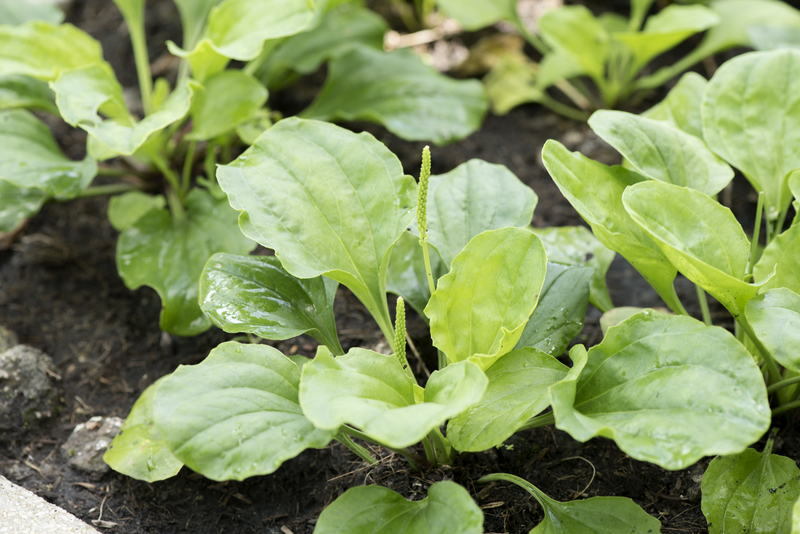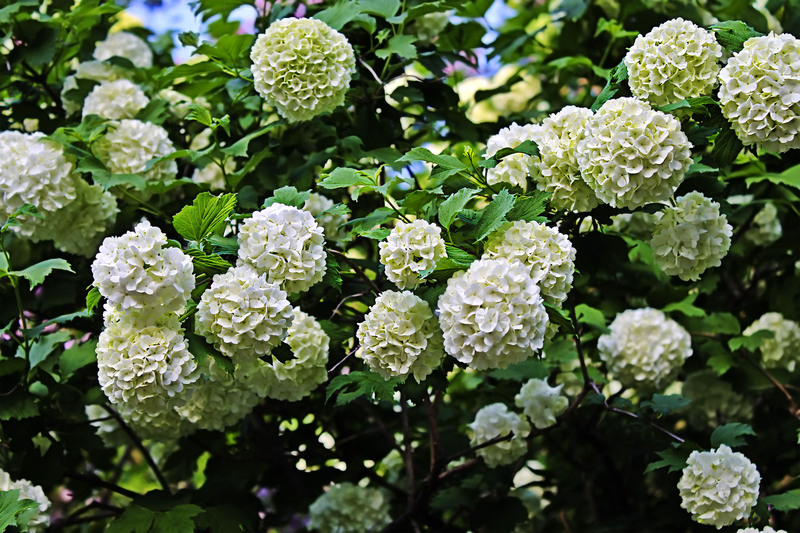Winterproof Techniques for Your Beloved Garden
Posted on 23/09/2025
Winterproof Techniques for Your Beloved Garden
Every gardener cherishes their patch of green serenity and fears the harsh chill of winter that can wreak havoc on months of hard work. Winterproofing your garden is a crucial practice if you want your plants to survive and thrive when the frost and snow arrive. With the right winterproof gardening techniques, you can safeguard your beloved plants, enrich your soil, and even prepare your garden for a vibrant spring. Read on for an in-depth guide on how to winterproof your garden effectively!

Why Is Winterproofing Your Garden Important?
Winter can present a host of challenges for gardens, including freezing temperatures, biting winds, heavy snow, and fluctuating soil conditions. Many plants are particularly sensitive during this season, while pests and fungi can over-winter and return with renewed vigor in spring. Here's why protecting your garden in winter is essential:
- Prevents frost damage to roots, stems, and leaves
- Retains soil health and prevents erosion
- Protects delicate bulbs and perennials from dying off
- Discourages pests and pathogen buildup
- Strengthens plants for early spring growth
Assessing Your Garden Before Winter
The first step in any winterizing garden strategy is to gauge the needs of your specific garden. Different plants and layouts require distinct solutions. Here's how to evaluate and plan:
Inventory Your Plants
- List perennials, shrubs, annuals, and trees
- Note their hardiness zone ratings
- Identify the most sensitive varieties (like tender herbs or exotic ornamentals)
Soil and Microclimate Check
- Test soil for compaction, drainage, and nutrients
- Observe shady spots that are more likely to harbor frost
- Map out areas susceptible to wind or water accumulation
Core Winterproofing Techniques for Gardens
These proven methods will help you protect your garden in winter and guarantee its survival through the coldest months.
1. Mulching: Your Garden's Winter Blanket
A thick mulch layer acts as insulation, preserving soil warmth and protecting roots. Mulching is one of the most reliable winter gardening techniques.
Best Practices:- Apply a 3-4 inch layer of organic mulch (straw, wood chips, shredded leaves)
- Mulch after the first hard frost but before the ground freezes completely
- Keep mulch a few inches away from woody stems to prevent rot
2. Protecting Perennials and Bulbs
*Perennials and bulbs need extra care to withstand severe frost and ice.*
- Cut back dead foliage to prevent disease and pests
- Divide and replant overcrowded perennials in early fall
- Layer extra mulch or use evergreen boughs for insulation on sensitive species
- Uproot tender bulbs (like dahlias or gladiolus), dry, and store indoors
3. Winterproofing Trees and Shrubs
Woody plants are tough, but sudden temperature drops and snow can cause splitting, breakage, or frost damage.
- Wrap trunks of young or thin-barked trees with tree wrap or burlap
- Stake newly planted trees for added stability
- Prune dead, diseased, or weak branches to prevent winter breakage
- Water thoroughly before the ground freezes
- Shield evergreens from desiccating winds with windbreaks made of burlap or fencing
4. Container Plant Winter Survival
Potted plants are highly susceptible to root freeze. Here's how to protect them:
- Move pots to sheltered spots, like against the house or inside a garage
- Group containers together to conserve heat
- Wrap pots with insulating materials--bubble wrap, burlap, or blankets
- Water moderately before deep freezes
- Consider sinking pots into the ground for insulation
5. Lawn Care for the Cold Months
- Mow the lawn short before winter to prevent matting
- Clear fallen leaves--excess can harbor disease
- Aerate compacted soil in the fall
- Apply winter fertilizer with potassium to enhance root strength
Special Winterproofing Techniques
Creating Microclimates
Taking advantage of natural structures such as fences, walls, or even tall hedges can shelter your more sensitive plants. These structures create microclimates with slightly higher temperatures and less wind.
- Plant tender species near south- or west-facing walls
- Install temporary wind guards with straw bales or snow fencing
- Use old windows or cold frames for ultra-frost-sensitive vegetables
Row Covers and Cloches
- Cover garden beds with floating row covers, frost cloth, or burlap
- Use clear plastic tunnels or homemade cloches to trap heat
- Ventilate covers on sunny days to avoid overheating
Winterproofing Your Vegetable Patch
Don't abandon your veggie garden just because frost is looming! Some vegetables thrive in cold, and the right techniques can keep the harvest coming.
- Sow cold-hardy varieties such as kale, spinach, and winter lettuce in late summer or fall
- Use raised beds for improved drainage and slightly warmer soil
- Utilize thick mulch and row covers for extra protection
- Harvest regularly to keep plants healthy
Best Winterproof Garden Products and Tools
Modern gardening offers a plethora of tools to bolster your winter garden protection:
- Weather-resistant plant covers: Ready-made frost blankets and garden fleeces
- Thermometer and moisture meter: To monitor changes and act promptly
- Soil amendments: Compost, organic matter, and winter fertilizer blends
- Insulating wraps for containers and tree trunks
Common Winterproofing Mistakes to Avoid
Even experienced gardeners can make errors that may cost them their beloved plants. Pay attention to these frequent missteps:
- Applying mulch too early: Can invite rodents or increase rot risk
- Forgetting to water: Dry spells can kill roots even in winter
- Ignoring pests: Some insects and rodents thrive in hidden mulch or bark
- Over-fertilizing: New growth in late fall is susceptible to frost damage
- Pruning at the wrong time: Avoid severe pruning just before winter, as it can lead to dieback
Eco-Friendly Winterproofing Solutions
Today's gardeners are more eco-conscious than ever. Opt for sustainable winterproof gardening methods:
- Use composted leaves rather than synthetic mulches
- Repurpose old blankets or burlap sacks for protection
- Plant native or locally adapted species for better natural resilience
- Rotate mulch types annually to disrupt pest cycles
Planning for a Bountiful Spring
A well-executed winterproofing plan not only shelters your garden from the cold but also lays the foundation for spring's rapid growth. Here's how to maximize the benefits:
- Leave strategic plant debris as habitat for beneficial insects
- Incorporate cover crops to enrich soil with nutrients and organic matter
- Set up early-season watering and monitoring routines
- Start seeds indoors if space permits, for an early head start

Frequently Asked Questions About Winterproofing Gardens
1. When should I start winterproofing my garden?
Begin preparations in mid to late fall, after most crops have finished and before sustained frost sets in. This ensures tools, materials, and protective actions are in place when the first chill arrives.
2. Can I compost in winter?
Absolutely! Keep your compost pile insulated with leaves or straw, and add kitchen waste throughout winter. Turn it occasionally to promote air circulation and decomposition.
3. Should I cut back all dead plants?
Not always. While removing diseased materials is important, some seed heads and stems provide habitat for pollinators and other beneficial insects over winter.
4. How do I protect raised garden beds?
Use deep mulch, install cold frames, and consider planting a winter cover crop to guard against temperature swings and soil erosion.
Conclusion: Keep Your Garden Safe and Flourishing Year-Round
Incorporating these winterproof gardening methods ensures that your cherished green space survives the onslaught of winter and emerges even more vibrant in spring. The effort you invest in winterproofing your beloved garden will yield dividends in robust growth, beautiful blooms, and fruitful harvests for years to come. With careful planning, timely actions, and an understanding of your garden's unique needs, you can be confident that your backyard oasis will weather any storm.
- Prepare in advance--prevention is always easier than repair.
- Embrace sustainable practices for both garden health and the environment.
- Monitor and adjust your techniques based on results and changing conditions.
Now that you have comprehensive, time-tested winterproof techniques for your beloved garden, you're equipped to nurture it through the cold and ensure many flourishing seasons ahead!

